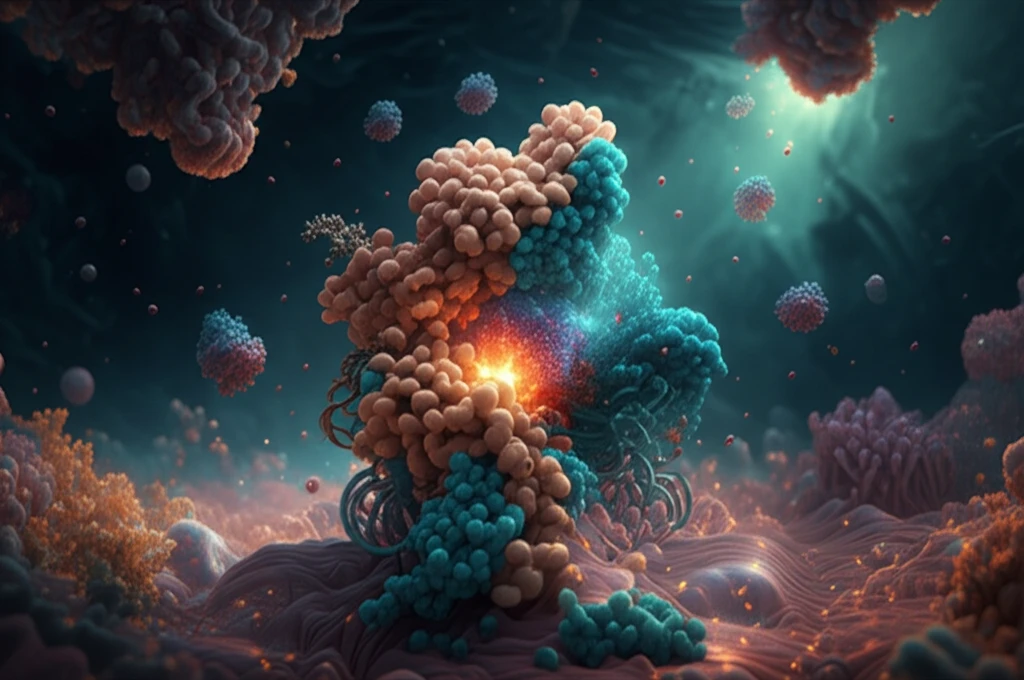
Unlock Your Longevity Potential: How SIRT1 and Insulin Signaling Hold the Key to Healthy Aging
"Discover the groundbreaking research revealing how insulin and cellular factors interact to influence SIRT1, a crucial protein for health and longevity, and how to potentially optimize its function."
In a world increasingly focused on extending healthspan and combating age-related diseases, understanding the intricate mechanisms that govern cellular health is paramount. At the heart of this quest lies SIRT1, a protein known as a sirtuin. SIRT1 acts as a key metabolic regulator, responding to changes in nutrient availability and playing a pivotal role in processes like DNA repair, inflammation, and energy metabolism.
Recent research has illuminated the complex interplay between SIRT1 and insulin signaling, a pathway central to metabolic regulation. Insulin, a hormone released in response to glucose, triggers a cascade of cellular events. The study in Molecular Cell by Krzysiak et al. (2018) uncovers a novel mechanism by which insulin signaling can actually suppress SIRT1 activity, adding a new layer to our understanding of how this critical protein is regulated.
This article will explore these fascinating findings, breaking down the science into accessible insights. We'll delve into how insulin, PACS-2, DBC1, and STACs (SIRT1-activating compounds) interact to influence SIRT1 function, offering a glimpse into potential strategies for optimizing metabolic health and promoting longevity.
The SIRT1-Insulin Connection: Decoding the Science

SIRT1, a member of the sirtuin family, is a protein deacetylase that relies on NAD+ (nicotinamide adenine dinucleotide) for its activity. NAD+ is a crucial coenzyme involved in numerous cellular processes, including energy production. SIRT1's activity is often elevated during periods of caloric restriction or exercise, situations where NAD+ levels increase. This activation leads to a cascade of beneficial effects, including improved glucose metabolism, enhanced mitochondrial function, and increased cellular resilience.
- Insulin Signaling: When insulin levels rise, it triggers a phosphorylation event on a protein called PACS-2 (Phosphofurin acidic cluster sorting protein 2).
- PACS-2 Activation: Once phosphorylated, PACS-2 binds to SIRT1, specifically to a region outside the catalytic core of the enzyme.
- DBC1 Involvement: Another protein, DBC1 (Deleted in Breast Cancer 1), also plays a role. DBC1 helps to displace a protective "shield" on SIRT1, making it accessible to PACS-2.
- SIRT1 Inhibition: The binding of PACS-2 ultimately inhibits SIRT1's deacetylase activity, effectively reducing its beneficial effects.
- STACs Intervention: SIRT1-activating compounds (STACs) can interfere with this process by blocking PACS-2 from binding to SIRT1, thereby preserving SIRT1's activity.
Implications and Future Directions
The findings of Krzysiak et al. (2018) have significant implications for our understanding of SIRT1 regulation and potential therapeutic strategies. By elucidating the role of insulin signaling and PACS-2 in SIRT1 inhibition, this research provides a foundation for developing targeted interventions that can modulate SIRT1 activity. This could involve strategies to enhance the effectiveness of STACs, identify new compounds that specifically block PACS-2 binding, or develop dietary or lifestyle interventions that promote optimal SIRT1 function. As we continue to unravel the complexities of aging and metabolic health, these insights offer a promising path toward extending healthspan and improving the quality of life.
